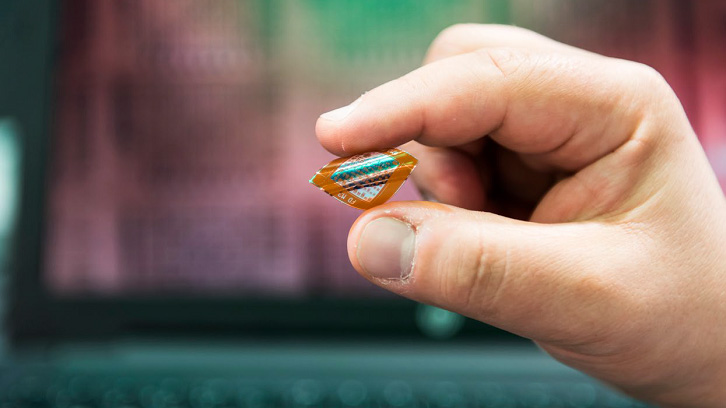Pursuing the commercialization of electronic applications based on graphene technology

The growing needs of faster and more complex connections require the development of innovative technologies to meet the demands of the market. The bidimensional character of graphene and its interesting electronic and physical properties made this material, from the moment of its discovery, a promising ingredient of the future of electronics. This is one of the reasons why the European Union launched, on October 1st 2013, the largest scientific research initiative, the Graphene Flagship (GF) project. With a budget of 1000 million euros and a duration of 10 years, the GF consortium consists of a combination between the academic and industrial worlds that actually constitutes the entire value chain of the future graphene-based technology. Specifically, the GF activities range from the study of the fundamental theory of the material, the development of large-scale production, and the design of specific electronic components, to the integration of this technology in complex systems. To assess a new technology, the “technology readiness level” (TRL) scale is used to indicate the level of the technology maturity, ranging from the original idea (TRL1) to the commercial deployment (TRL9).
The Computational Nanoelectronics (NANOCOMP) research group from UAB has actively participated in the GF since its inception and, among other contributions, develops physical and mathematical models that predict the behaviour of different graphene-based electronic devices. On the one hand, NANOCOMP provides support to the GF consortium by predicting how powerful and fast (delimiting operating frequency limits) the novel devices are able to become. These studies are of upmost importance, especially in TRL3 (experimental proof-of-concept demonstrated) and 4 (component validation in laboratory environment), since it allows the consortium to choose which devices are more interesting for the future design of electronic applications, evaluating the feasibility of using them for the emerging world of 5G. Specifically, electrical models developed by NANOCOMP predicted the performance of field-effect transistors (basic devices in many electronic applications) based on monolayer graphene, bilayer graphene, and graphene combined with boron nitride (a material that has been demonstrated to boost the graphene electronic properties).
On the other hand, the predictive electrical models developed by the research group have been implemented into technology computer-aided design (TCAD) tools to allow for simulating complex electronic circuits including graphene devices. TCAD software, such as Cadence Design Systems© or Advanced Design Systems©, is very useful in the design and optimization of circuits based on a large number of devices. This way, they have enabled the development of the future integrated circuits based on such a novel technology. Specifically, TCAD tools for monolayer graphene based field-effect transistors and diodes have been developed to push the graphene technology beyond TRL6 (prototype demonstration in a relevant environment).
For the subsequent verification of the commercial deployment (TRL9) of graphene-based electronic applications, we should still wait a few years, even beyond the end of the GF in 2023. However, what we have currently checked is that the GF represents one of the largest collectives coordinated in a research initiative. As Winston Churchill once said: “If we are together, nothing is impossible. If we are divided, all will fail.”
It is suggested to visualize this video.
Department of Electronic Engineering
Autonomous University of Barcelona
References
Doctoral Thesis. Modelling of field-effect transistors based on 2D materials targeting high-frequency applications. Francisco Pasadas Cantos. Defendida en el programa de doctorado en Ingeniería Electrónica y de Telecomunicación. Dirigida por el Dr. David Jiménez. https://hdl.handle.net/10803/405314
Some references of the article:
F. Pasadas, D. Jiménez.(2016). Large-Signal Model of Graphene Field-Effect Transistors—Part I: Compact Modeling of GFET Intrinsic Capacitances. IEEE Trans. Electron Devices, 63(7), 2936–2941. DOI: 10.1109/TED.2016.2570426.
F. Pasadas, M. Saeed, A. Hamed, Z. Wang, R. Negra, D. Neumaier, D. Jiménez.(2019). Large-signal model of the Metal-Insulator-Graphene diode targeting RF applications. IEEE Electron Device Lett. 40(6), 1005–1008. DOI: 10.1109/LED.2019.2911116.
P. C. Feijoo, F. Pasadas, J. M. Iglesias, M. J. Martín, R. Rengel, C. Li, W. Kim, J. Riikonen, H. Lipsanen, D. Jiménez.(2017). Scaling of graphene field-effect transistors supported on hexagonal boron nitride: Radio-frequency stability as a limiting factor. Nanotechnology, 8, 485203. DOI: 10.1088/1361-6528/aa9094.
P. C. Feijoo, F. Pasadas, J. M. Iglesias, E. M. Hamham, R. Rengel, D. Jiménez.(2019). Radio Frequency Performance Projection and Stability Tradeoff of h-BN Encapsulated Graphene Field-Effect Transistors. IEEE Trans. Electron Devices, 66(3), 1567–1573. DOI: 10.1109/TED.2018.2890192.


